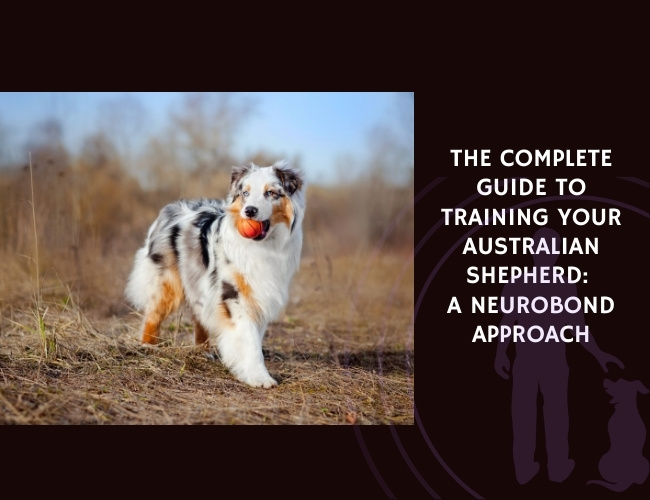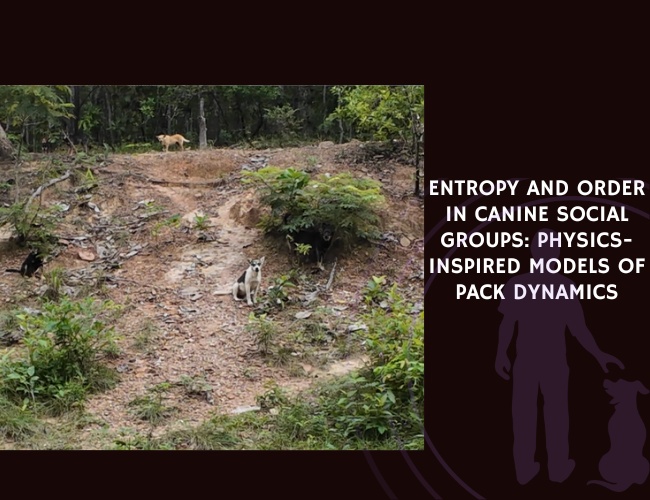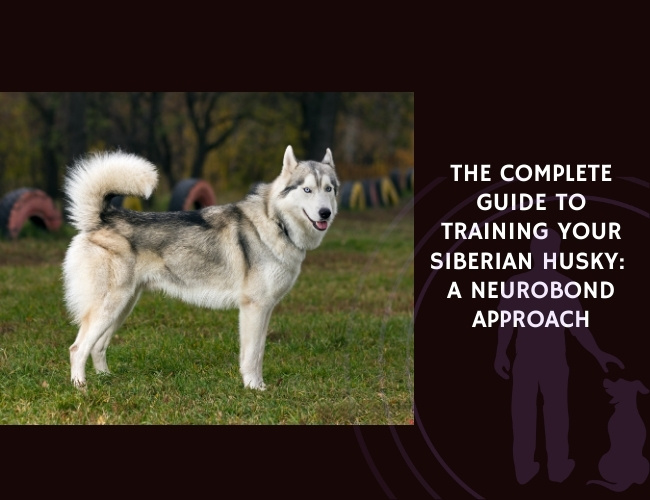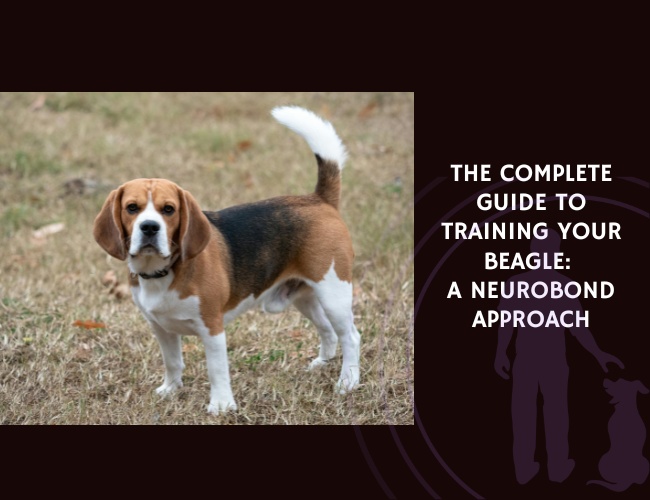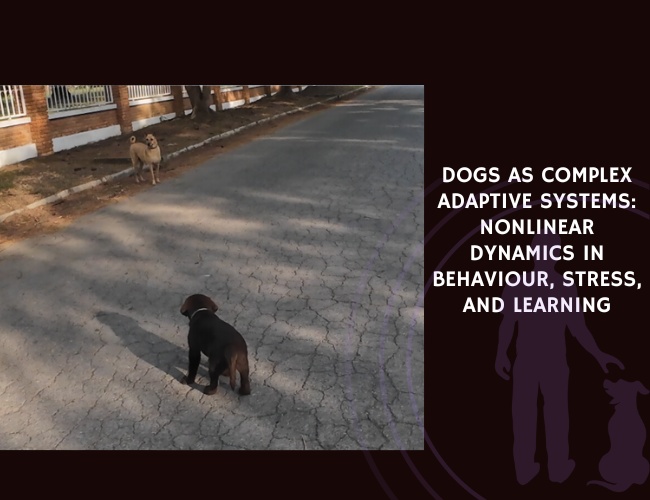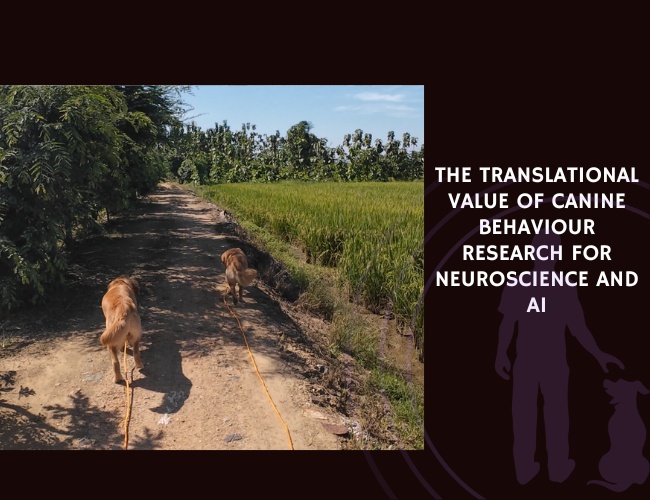Introduction: Understanding Your Australian Shepherd’s Mind
Your Australian Shepherd isn’t just intelligent—they’re a problem-solving partner waiting to connect with you. Born from the rugged ranches of the American West, these dogs carry generations of collaborative work in their DNA. They don’t just learn commands; they seek to understand the why behind every interaction.
Recent research in Scientific Reports revealed something remarkable: Australian Shepherds demonstrate the highest levels of human-directed behavior when facing challenges, spending more time seeking human assistance than any other breed studied. This isn’t stubbornness—it’s an invitation to partnership. Your Aussie is hardwired to work with you, not for you.
The NeuroBond approach recognizes this fundamental truth. Rather than forcing obedience through repetition or correction, we’re building on what your Australian Shepherd already knows: that the best solutions come through connection, trust, and shared understanding. Let us guide you through a training philosophy that honors your dog’s instincts while creating the invisible leash of genuine partnership.
Character & Behavior: The Australian Shepherd Operating System
The Collaborative Genius
Your Australian Shepherd operates on a different frequency than most dogs. Think of them as a highly sophisticated operating system—one that processes visual information at lightning speed, anticipates patterns before you see them, and constantly seeks meaningful engagement. Research shows they’re the least likely breed to abandon challenging tasks, but here’s the crucial insight: they’re not just persistent, they’re collaborative persisters.
This means your Aussie doesn’t just want to solve problems—they want to solve them with you. When you notice your dog constantly checking in during walks, making eye contact during play, or bringing you their toys unprompted, you’re witnessing their collaborative instinct in action. This is the foundation upon which all NeuroBond training builds.
Emotional Intelligence Beyond Measure
Australian Shepherds possess what researchers call “emotional contagion”—they don’t just observe your emotions, they absorb them. Your stress becomes their anxiety. Your calm becomes their peace. This isn’t a burden; it’s your most powerful training tool.
In the NeuroBond framework, we call this the “emotional mirror.” Your Aussie is constantly reading your internal state through micro-expressions, breathing patterns, and energy shifts you’re not even aware of. This sensitivity means that traditional correction-based methods don’t just fail—they actively damage the very connection that makes training possible. When you understand that your dog is literally feeling what you feel, every training session becomes an exercise in emotional regulation—yours first, then theirs.
The Motion-Sensitive Mind
Here’s something most trainers miss: Australian Shepherds were bred to notice and respond to the slightest movement in a flock of sheep from 50 yards away. In your living room, this translates to a dog who notices the cat’s tail twitch three rooms away, the leaf falling outside the window, and your child’s sudden dash across the yard—all simultaneously.
This visual hypersensitivity isn’t a training challenge; it’s a superpower waiting to be channeled. The NeuroBond approach doesn’t suppress this awareness—we redirect it toward constructive outcomes. Your Aussie’s motion sensitivity becomes the foundation for incredible recall, flawless heel work, and intuitive responsiveness to your body language.
Vocalization & Communication: Learning Your Aussie’s Language
The Vocabulary of Connection
Australian Shepherds don’t just bark—they communicate in a complex language of vocalizations, each with distinct meaning. You might notice the sharp, single bark that says “attention needed,” the low rumble that means “I’m processing something unfamiliar,” or the excited yodel that erupts during play. Each sound is feedback about your dog’s internal state and your relationship’s current status.
In NeuroBond training, we don’t silence these communications—we engage with them. When your Aussie offers that questioning whine during training, they’re not being difficult; they’re asking for clarification. Respond with calm guidance, not frustration. Remember: behavior is feedback, and vocalization is your dog’s attempt to maintain connection even when confused.
Body Language as Primary Communication
Your Australian Shepherd reads your body like a book written in a language they’ve studied since birth. Research confirms they respond more strongly to visual cues than verbal commands, which means your posture, hand position, and even where you’re looking communicate more than your words ever will.
This is why the NeuroBond method emphasizes “invisible commands”—behaviors driven by relationship and body language rather than verbal cues. Watch an experienced handler work with their Aussie, and you’ll see communication that looks like telepathy. It’s not magic; it’s the result of allowing the dog to use their natural visual processing strengths rather than forcing them into human-centric verbal frameworks.
Training & Education: The NeuroBond Method in Practice
First Step: Building the Emotional Foundation
Before any command, before any task, comes connection. The NeuroBond approach begins not with “sit” or “stay,” but with teaching your Australian Shepherd that you are their safe harbor in a world of overwhelming stimuli. This isn’t about dominance or being the “alpha”—concepts that science has long debunked. It’s about becoming the trusted guide your collaborative partner needs.
Start with the “check-in” behavior. Don’t command it—invite it. When your Aussie naturally looks at you during a walk, mark that moment with calm praise. Not excited celebration—remember, you’re teaching emotional regulation through your own state. Within days, you’ll notice increased eye contact. Within weeks, your dog will automatically check in when uncertain. This becomes the invisible leash that makes all other training possible.
The Power of Instinct-Guided Learning
Here’s where the NeuroBond philosophy revolutionizes Australian Shepherd training: we don’t suppress their herding instinct—we speak through it. Your Aussie wants to control movement and maintain order. Instead of fighting this instinct when they try to herd children or chase cars, we redirect it.
Standing on the leash technique: When your Aussie pulls, don’t jerk back (remember, they’re physically tough—bred to take kicks from livestock). Instead, simply stand still. Plant yourself like a fence post. Your dog’s own forward momentum creates the pressure, and their problem-solving mind immediately begins calculating solutions. Most will try several options—pulling harder, changing angles, maybe even a frustrated bark. Then, magic happens: they turn to look at you.
That moment—when they choose connection over instinct—that’s where learning lives. Mark it with calm praise and move forward together. You’ve just taught your dog that partnership yields progress, not force.
Variety: The Antidote to Boredom
Research shows Australian Shepherds actually dislike repetition. Drilling the same command twenty times doesn’t create reliability—it creates resentment. Your Aussie’s brain craves novelty and challenge the way their body craves movement.
In practice, this means every training session should feel like a new adventure. Teaching “stay”? Practice it in different rooms, at different distances, with different distractions. Add duration one day, distance the next, distractions after that. Create what we call “training games”—hide and seek with stays, recall races with family members, heel work that becomes a dance.
Your Australian Shepherd doesn’t want to be trained—they want to be engaged. When you understand this distinction, training transforms from a chore into the highlight of your dog’s day.
Performance & Activities: Channeling the Drive
Mental Exercise: The Hidden Requirement
Here’s what most Australian Shepherd owners learn the hard way: a tired Aussie isn’t necessarily a good Aussie. Physical exhaustion without mental stimulation creates a fit, frustrated dog who can run for hours but can’t settle for minutes. Your dog’s brain needs workouts as much as their body—arguably more.
The NeuroBond approach integrates mental challenges into everyday life. Meals become puzzle-solving sessions. Walks become scent-tracking adventures. Even relaxation becomes an active choice through “settle” exercises where your dog learns that calmness is a job worthy of their attention.
Work Without Sheep: Modern Jobs for Ancient Instincts
Your Australian Shepherd was born to work, but that doesn’t mean you need a flock of sheep. The NeuroBond framework helps you create “jobs” that satisfy their working drive while fitting your lifestyle:
The Morning Report: Teach your Aussie to bring you specific items each morning—slippers, newspaper, coffee mug (empty!). This satisfies their need for routine work while building helpful behaviors.
Toy Management: Assign your dog the job of gathering all toys into a basket at day’s end. This channels their herding instinct into home organization.
Family Guardian: Not through aggression, but through awareness. Teach your Aussie to “check on” family members, doing rounds through the house and reporting back. This satisfies their watchdog nature while building positive monitoring behaviors.
The Flow State: Where Magic Happens
Watch an Australian Shepherd working sheep, and you’ll see something transcendent—a state of complete absorption where instinct, training, and joy merge into fluid motion. The NeuroBond method aims to recreate this flow state in everyday activities.
This might manifest as your dog anticipating your needs during a hike, maintaining perfect heel position without being asked, or seamlessly navigating a crowded farmers market while maintaining constant awareness of your position. This isn’t obedience—it’s partnership at its highest expression.
Nutritional Recommendations: Fueling the Thinking Dog
Brain Food for Problem-Solvers
Your Australian Shepherd’s exceptional cognitive abilities require exceptional nutritional support. Their brain burns calories at a rate that would surprise you—mental work can exhaust them faster than physical exercise. This means their diet needs to support both their athletic body and their constantly processing mind.
High-quality proteins aren’t just for muscle development—they provide amino acids essential for neurotransmitter production. Omega-3 fatty acids, particularly DHA, support the cognitive flexibility that makes your Aussie such a quick learner. The NeuroBond approach extends to feeding: make meals an opportunity for connection, not just consumption.
The Food Drive Advantage
Research identifies Australian Shepherds as having extremely high food motivation—something many see as a training challenge due to impulse control issues. The NeuroBond framework reframes this: high food drive means high motivation potential. Your dog’s enthusiasm for food becomes the currency for building new neural pathways.
Use this to your advantage through “working for food” protocols. Replace bowl feeding with training sessions, puzzle feeders, and scatter feeding that engages their problem-solving mind. Every meal becomes an opportunity to strengthen your bond while satisfying their need for mental stimulation. Remember: in nature, no animal eats without effort. Your Aussie’s food drive is asking for the chance to earn their keep.
Intuitive. Collaborative. Sensitive.
Partnership drives learning. Australian Shepherds aren’t built for blind obedience but for shared problem-solving, seeking human input as part of their working heritage.
Persistence with connection. They tackle challenges with determination, constantly checking in and engaging, showing intelligence that thrives on collaboration over repetition.


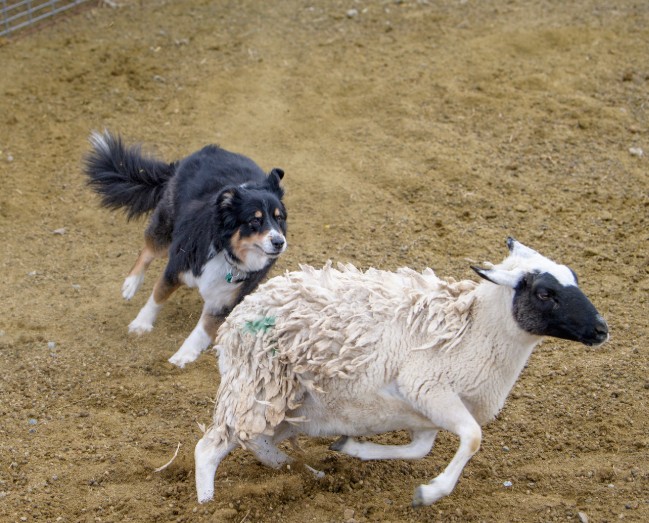
Emotions guide behaviour. As living mirrors, they absorb human stress or calm, making trust and emotional balance the core of every successful training moment.
Health Concerns: The Physical-Mental Connection
Stress and the Sensitive System
Australian Shepherds don’t just have sensitive minds—they have sensitive systems. Their high intelligence and emotional awareness mean they’re more prone to stress-related health issues than many other breeds. Chronic stress can manifest as digestive issues, skin problems, and even seizure disorders in predisposed individuals.
The NeuroBond approach addresses this through proactive stress management. By building that foundational trust and teaching your dog that you’re their emotional regulator, you’re not just improving behavior—you’re protecting their physical health. Every calm training session, every peaceful walk where your dog checks in rather than reacts, adds to their stress resilience bank account.
Exercise: Quality Over Quantity
Here’s something counterintuitive: many Australian Shepherd health issues stem from over-exercise, not under-exercise. Their “push through pain” breeding means they’ll run on injured joints, ignore muscle fatigue, and literally work themselves into breakdown if allowed.
The NeuroBond method emphasizes varied, appropriate exercise that engages mind and body together. Think interval training rather than marathons. Short bursts of high-intensity work (fetch, agility sequences) alternated with problem-solving activities and calm connection time. Your goal isn’t to exhaust your Aussie—it’s to fulfill them.
Lifestyle & Environment: Creating the Right Context
The Three-Times Rule
Research confirms what experienced handlers know: Australian Shepherds require three times the socialization of retriever breeds. This isn’t a one-time puppy process—it’s a lifetime commitment. Their visual sensitivity and watchdog instincts mean every new experience needs careful introduction and positive association.
In the NeuroBond framework, socialization isn’t about exposure—it’s about creating positive emotional associations while maintaining connection with you. Your Aussie doesn’t need to love everyone and everything; they need to trust that you’ll guide them through any situation. This shifts socialization from overwhelming exposure to confidence-building experiences.
Environmental Design for Success
Your Australian Shepherd’s environment should support their success, not challenge it unnecessarily. This means creating spaces that allow for both stimulation and calm. A window perch where they can monitor the neighborhood satisfies their watchdog instincts without creating barrier frustration. A designated “thinking zone” with puzzle toys provides mental stimulation without overwhelming the entire living space.
Remember: context is everything. The same dog who herds children in an open yard might be perfectly calm in a structured indoor environment. Use environmental design to set your Aussie up for success, then gradually expand their comfort zones through guided experience.
Senior Care: The Wisdom Years
Maintaining the Mind
Australian Shepherds maintain their learning capacity well into their senior years—a fact that many owners don’t fully appreciate. At 7, 8, even 10 years old, your Aussie’s mind remains sharp and eager for engagement. The NeuroBond approach doesn’t retire senior dogs; it adapts to their changing capabilities while honoring their continued need for mental stimulation.
Introduce new puzzle toys, teach gentle tricks that don’t stress aging joints, and create “senior jobs” that make them feel valuable. An older Aussie might transition from active herding games to “supervisory” roles—watching younger dogs play while alerting you to any concerns. This maintains their sense of purpose while respecting physical limitations.

The Deepening Bond
Something beautiful happens in the senior years: the NeuroBond that you’ve built over time becomes almost telepathic. Your aging Aussie knows your routines, anticipates your needs, and offers comfort without being asked. This is the invisible leash at its fullest expression—a connection that transcends training and becomes pure relationship.
Continue to engage with your senior Aussie as the intelligent, sensitive partner they’ve always been. Their body may slow, but their desire for connection never fades. These wisdom years are when the investment you’ve made in relationship-based training pays its greatest dividends.
Common Challenges: Reframing Problems as Communication
Reactivity: The Overwhelmed Processor
When your Australian Shepherd barks at every passing dog, lunges at bicycles, or melts down in busy environments, they’re not being aggressive—they’re overwhelmed. Their visual processing system is receiving more input than they can handle, and without proper support, they default to instinctive responses.
The NeuroBond solution isn’t to suppress the reaction but to address the overwhelm. Start by recognizing early stress signals—the tightening of facial muscles, the fixed stare, the slight lean forward. Interrupt these early stages with connection: “check in” behavior, gentle touch, or simply moving away. You’re teaching your dog that when the world becomes too much, you’re their reset button.
Herding Behaviors: Instinct Seeking Outlet
Your Aussie nipping at children’s heels or chasing cars isn’t defiance—it’s an ancient instinct seeking expression in a modern world. The NeuroBond approach doesn’t punish this instinct; we redirect it.
Create appropriate outlets: teach your dog to “herd” toys into specific locations, to “round up” family members for dinner, to maintain specific positions relative to you during walks. When herding behaviors emerge inappropriately, don’t just say “no”—offer an alternative that satisfies the same instinctive need. Remember: your dog is an operating system programmed for specific functions. Give those functions appropriate expression, and problematic behaviors naturally diminish.
Separation Anxiety: The Connection Crisis
Australian Shepherds bond deeply, and separation anxiety is often the shadow side of this beautiful trait. In the NeuroBond framework, we don’t see separation anxiety as excessive attachment—we see it as incomplete trust development.
Build separation tolerance gradually through “micro-departures”—stepping out of sight for seconds, then returning before anxiety peaks. You’re teaching your dog that separation is temporary and survivable. Pair departures with special activities (puzzle toys, hidden treats) that only appear when you leave. Transform alone time from abandonment into opportunity.
The NeuroBond Difference: Why Traditional Methods Fall Short
Beyond Dominance: The Science of Partnership
Traditional training often relies on dominance theory—a concept thoroughly debunked by modern behavioral science. Australian Shepherds, with their collaborative nature and high sensitivity, are particularly damaged by dominance-based approaches. Force doesn’t create obedience; it destroys the very partnership instincts that make Aussies exceptional.
The NeuroBond method aligns with what research confirms: dogs trained with positive, relationship-based methods show stronger attachment, better problem-solving abilities, and lower stress levels. Your Australian Shepherd doesn’t need an alpha—they need a trusted guide who understands their unique operating system.
The Invisible Leash in Action
Watch a truly connected Australian Shepherd-human team, and you’ll see something that looks like magic. The dog maintains perfect position without a leash, responds to the subtlest body language, and seems to read their human’s mind. This isn’t the result of harsh training or endless repetition—it’s the NeuroBond fully realized.
This invisible leash isn’t about control—it’s about choice. Your Aussie chooses proximity because connection feels better than independence. They choose calmness because they’ve learned it brings rewards. They choose partnership because you’ve proven yourself worthy of their remarkable trust.
Conclusion: Is This Journey Right for You?
Training an Australian Shepherd through the NeuroBond method isn’t just about having a well-behaved dog—it’s about entering into one of the most profound interspecies partnerships available to humans. Your Aussie offers you their problem-solving mind, their emotional sensitivity, and their complete devotion. In return, they ask for understanding, engagement, and genuine connection.
The Australian Shepherd Owner’s Reality Check
Before committing to this remarkable breed, honestly assess whether you can provide:
- Mental Stimulation Equal to Physical Exercise: Can you dedicate 2-3 hours daily to combined physical and mental activities, understanding that a tired body without a tired mind creates frustration, not calm?
- Emotional Regulation and Patience: Will you maintain calm consistency when your dog mirrors your stress, knowing that your anxiety becomes theirs and undermines every training effort you make?
- Lifetime Socialization Commitment: Are you prepared for ongoing socialization work that’s three times more intensive than retriever breeds, continuing throughout your dog’s entire life, not just puppyhood?
- Creative Problem-Solving Daily: Can you constantly vary training approaches, create new challenges, and avoid repetitive drilling that will bore your intelligent dog into disengagement or resentment?
- Partnership Over Control: Will you resist the urge to dominate or force compliance, instead building the patient trust that creates an invisible leash stronger than any physical restraint?
- Investment in Understanding: Are you willing to learn your dog’s unique communication style, reading their body language and vocalizations as feedback about your relationship rather than defiance?
- Long-Term Dedication: Can you commit to a 12-15 year journey with a dog who will study you as intensely as you study them, requiring consistent engagement even in their senior years?
If you’re nodding yes, then you’re ready for the extraordinary journey of life with an Australian Shepherd. The NeuroBond approach doesn’t promise easy—it promises profound. Your Aussie won’t just be trained; they’ll be connected. They won’t just obey; they’ll collaborate. And in that collaboration, you’ll discover something remarkable: a relationship that transcends species and touches something essentially wild and essentially loving in both of you.
The path ahead requires patience, consistency, and a willingness to see training not as a task but as a relationship. Your Australian Shepherd is already waiting, watching, ready to begin. The question isn’t whether they’re trainable—it’s whether you’re ready to be their partner.
Take that first step. Build that first connection. Let the NeuroBond begin. 🐾

